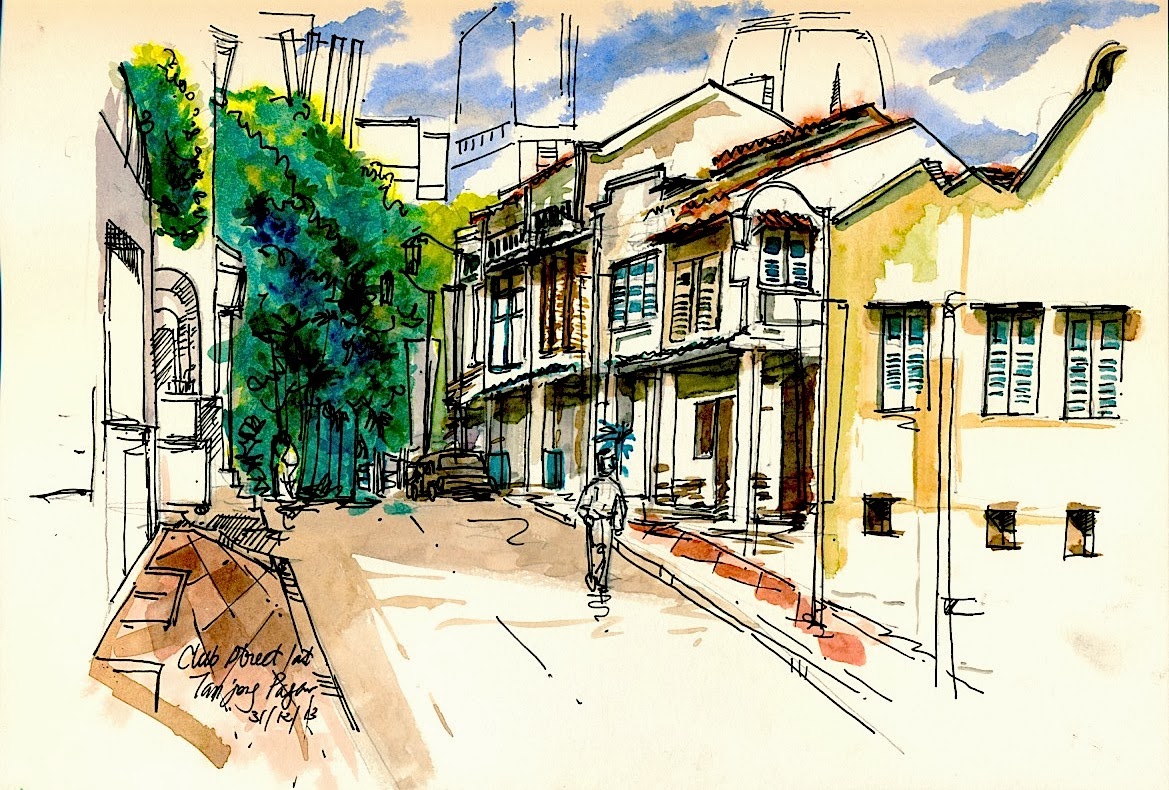History
For the last sketchwalk of the year, the Urban Sketchers decided to take on Dempsey: the place steep in history and the land's architectural records of its colonial past. Looking at the lush greenery and resort-like ambience that
characterises Dempsey Hill of today, it may be difficult to associate
this relaxed and laid back place with the discipline and regiment of the
military. It may thus come as a surprise to some that the premises at
Dempsey Hill used to be the Central Manpower Base of Singapore (“CMPB”)
and former British army barracks. Old-timers may still be able to make
out the parade square, and the old CMPB office premise, now a lifestyle
destination. They may also remember this as the place where young
Singaporean men, some accompanied by anxious parents, reported for their
“national service”, that is, compulsory military service, when they had
come of age.
The three-tonners ferrying men to their respective army units, and the
anxious recruits with shorn heads may no longer be there, as the CMPB
was eventually relocated to the more modern and larger premises at Depot
Road in 1989 after 17 years. But for many, the legacy of Dempsey as the
first port of call for every young man enlisting for the army will
doubtlessly be remembered with nostalgia and fondness.
Saint George's Church
The building was constructed from materials imported from
England and cost
£2,000
to build. The current building dates back to 1910 but there was an
earlier St George's built in 1884 near the site of the present church.
Both churches were built for the British troops quartered at Tanglin
Barracks. Tanglin Barracks was once the General Headquarters of the
British Far East Land Forces. After the
British forces left in 1968, it was used by the
Ministry of Defence as its headquarters before the ministry moved to new premises in
Bukit Gombak.
The land had formerly been used as a
nutmeg plantation and it included
Mount Harriet, a 103-
foot high
hill
on which the church now stands. The land had belonged to William E.
Willan and was sold in 1865. However, even before the church was built,
an
ordained minister for the garrison was appointed in 1871.








